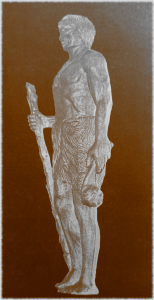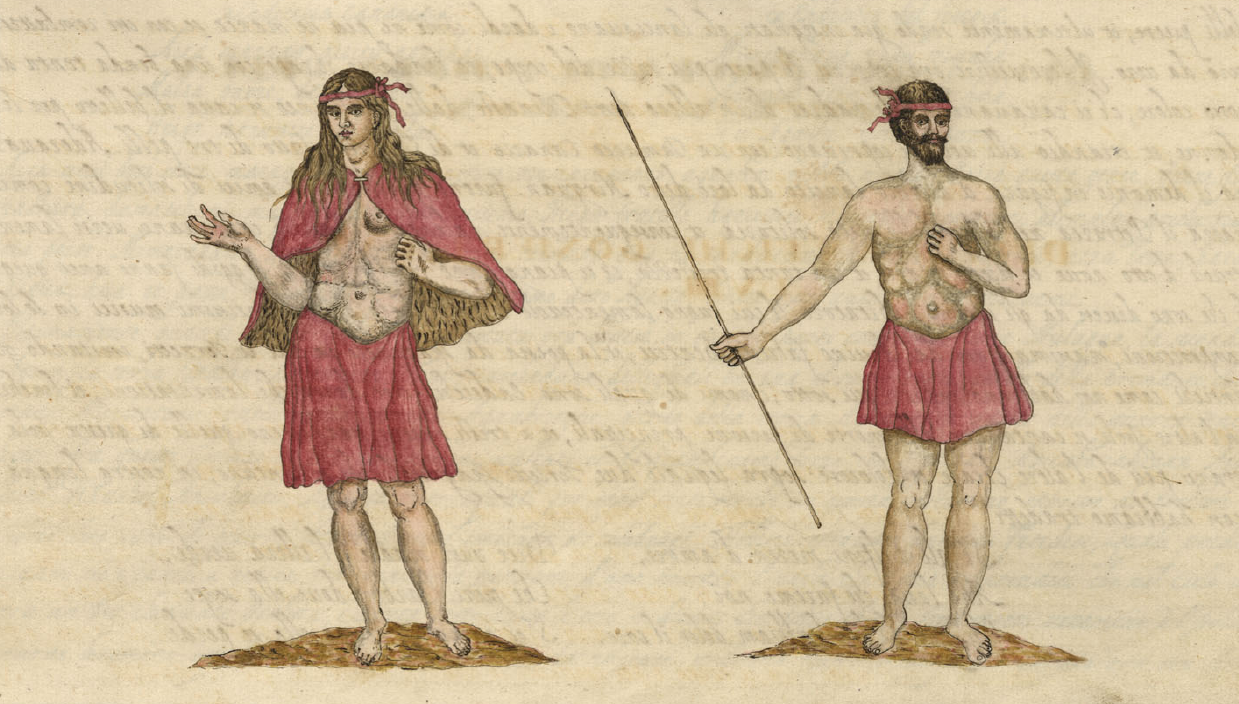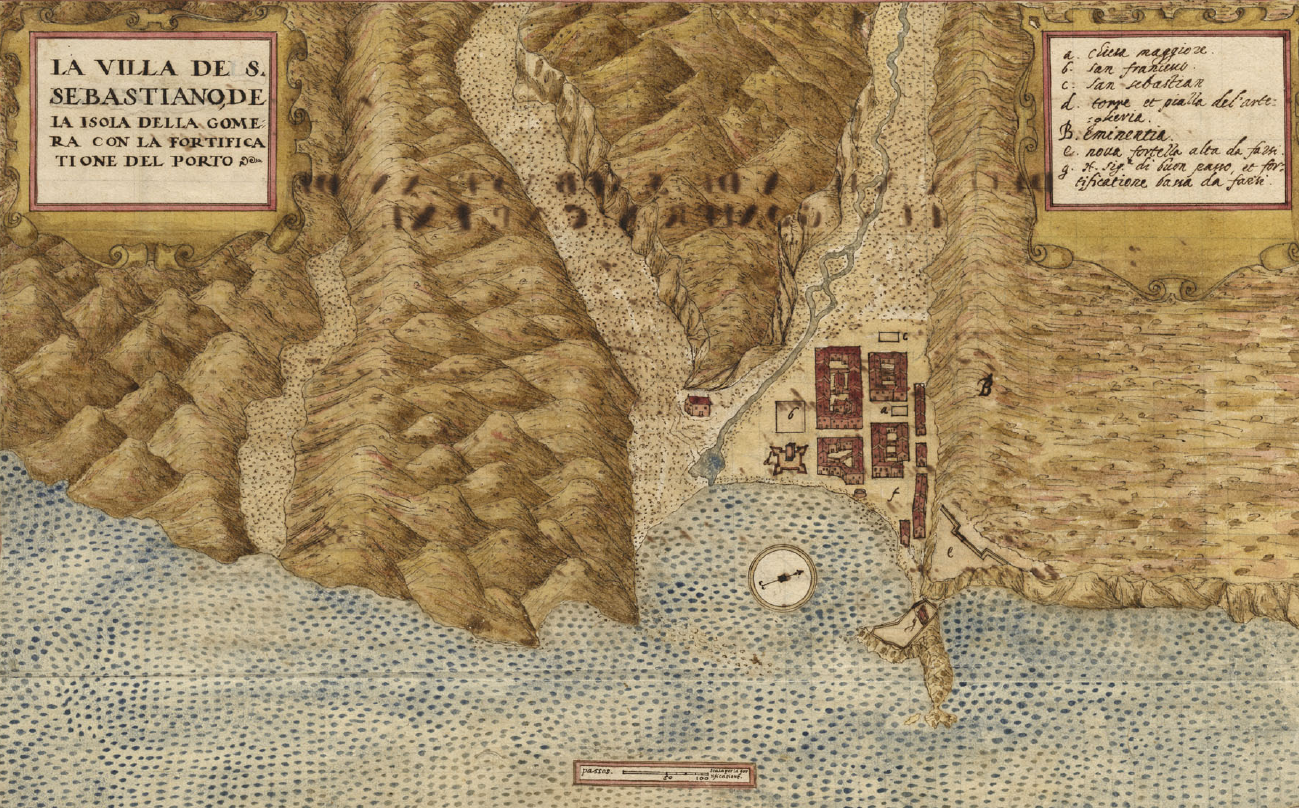Doramas' two deaths and the enigmatic chronicler Pedro López

An idealized statue of Doramas by Grandcanarian sculptor Abraham Cárdenes (1907-1971) (source: MILLARES TORRES, A. et al. (1977 [1893]), Historia General de las Islas Canarias, vol. II, Las Palmas de Gran Canaria: EDIRCA, p. 178).
In our post devoted to Benahoarite chieftain Tanausu we pointed the importance of the ancient Canarian heroes in the building of the Archipelago’s folklore.
This value reaches a paradigmatic height in the case of Grandcanarian warrior Doramas by adding to the classic personal attributes of courage, abnegation and self-sacrifice, typical of a heroic model, that of the subject of humble origins determined to build his own destiny, who strives to ascend with his only effort along the social pyramid to which he belongs, while simultaneously facing the obstacles placed both by the status quo –an islander oligarchy determined to perpetuate itself in power through the instrument of lineage– and by forces other than internal social contradictions –European invaders–.



